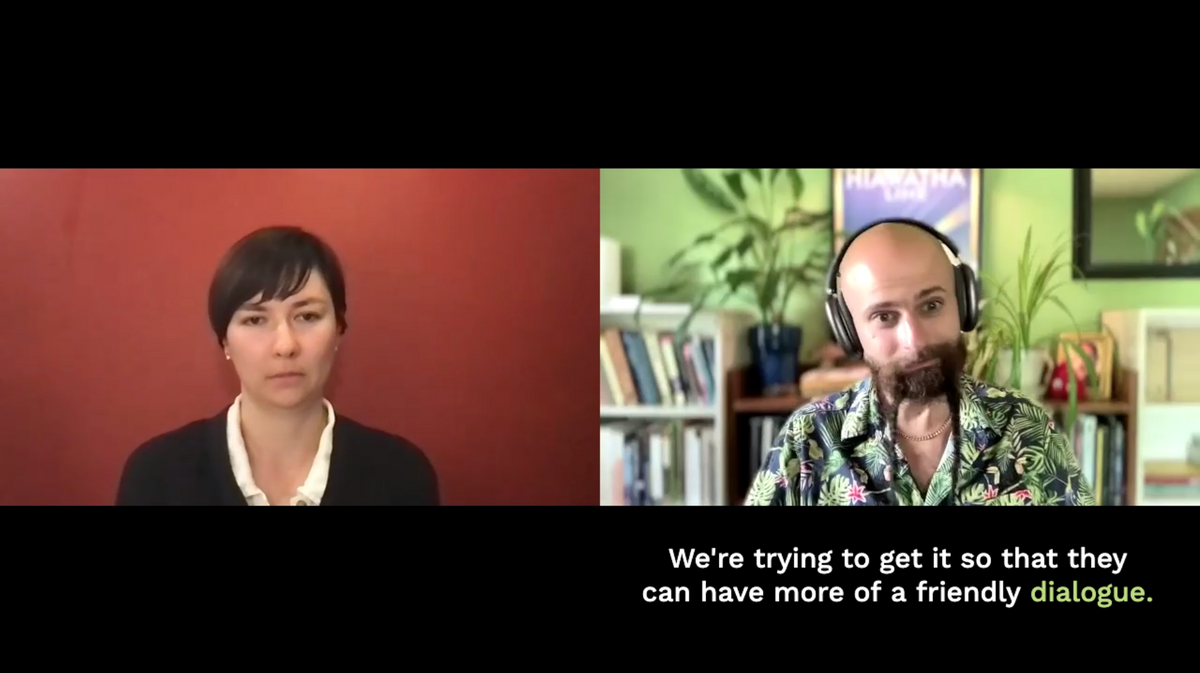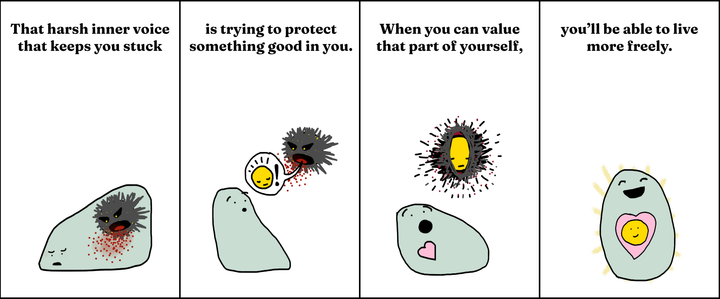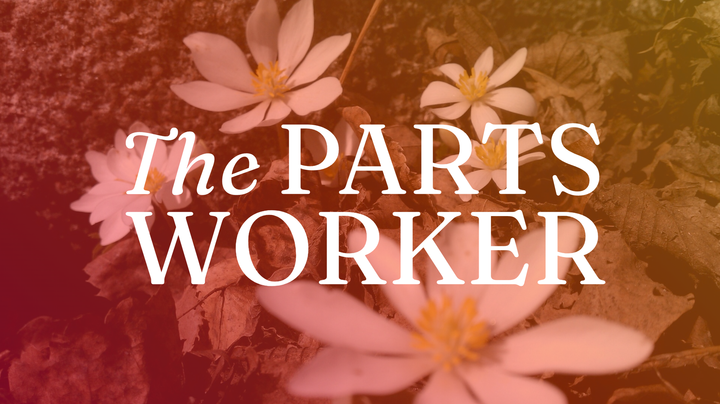Demo session 5: Explaining the theory
The idea that you can heal just by making friends with various parts of your inner life — how can that possibly be true? The skeptical parts of us are wise to demand an answer. Here I explain exactly how the IFS model is supposed to work by explaining how it’s similar to my client’s line of work.

At some point or other, my coaching clients always ask a version of the same skeptical question: How is paying attention to my inner world supposed to make me feel better? By the time they make an appointment with me, my clients have usually spent years or decades trying one healing practice after another, with little success to show for it. Many parts of them are justly suspicious of any new offer of support. They don’t want to get their hopes up, only to be disappointed again — and they really don’t want to try anything that could make them feel even worse. And the idea of attributing personal qualities to various mental patterns strikes many skeptical parts as hokey, childish, or even literally insane.
In the previous part of our demonstration session, a part of “Michelle” (Alysa Haas) intervened to shield her from lingering too long on a very intense feeling. We honored its intervention and immediately backed off. At this point, I had a hunch that there were parts of “Michelle” who might feel more comfortable if they understood what we were doing. I explained the Internal Family Systems model in terms that were likely to make “Michelle,” a journalist, feel in control and confident. “You’re a writer, right?” I asked.
“MICHELLE”: Yeah.
ASH: So I think of what we’re doing now as sort of characterization. Looking inside of us and finding patterns. And then trying to interact with them by imagining them as sort of characters. Does that make sense?
“MICHELLE”: Yeah, it does. But I’m also like, why?
Another fair question!
ASH: What you and I are doing is we’re trying to make all of those different voices that are right now yelling in your head. We’re trying to get it so that they can have more of a friendly dialogue. And the way we do that is by just paying attention to them. And because as humans we’re really good at paying attention to other human beings, we just imagine these different parts of ourselves as though they were like little inner characters. Like a little internal family, as it were.
And that is the IFS model in a nutshell. See how “Michelle” responds:
This quick explanation of the theory doesn’t win over all Michelle’s protective parts at once, of course. As we continue, she’ll ask another wise and profound question: Why in the world do parts of us deliberately make us feel bad?
⏮️ Previous | All clips | Next ⏭️




